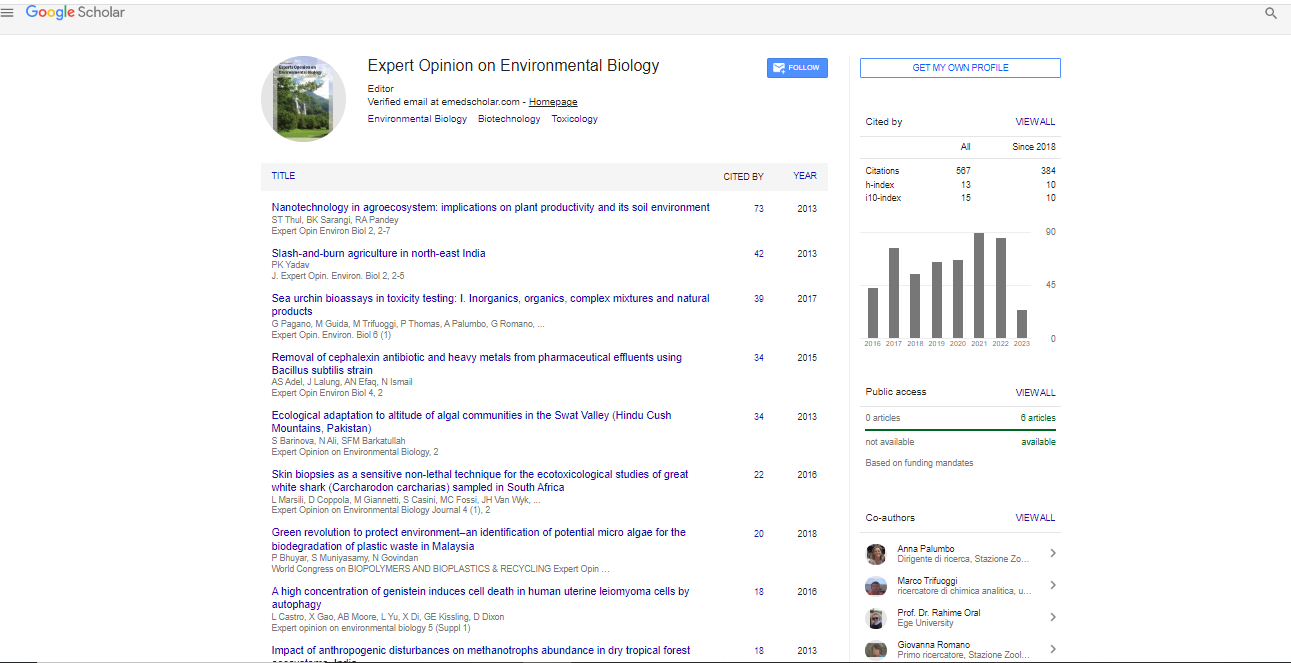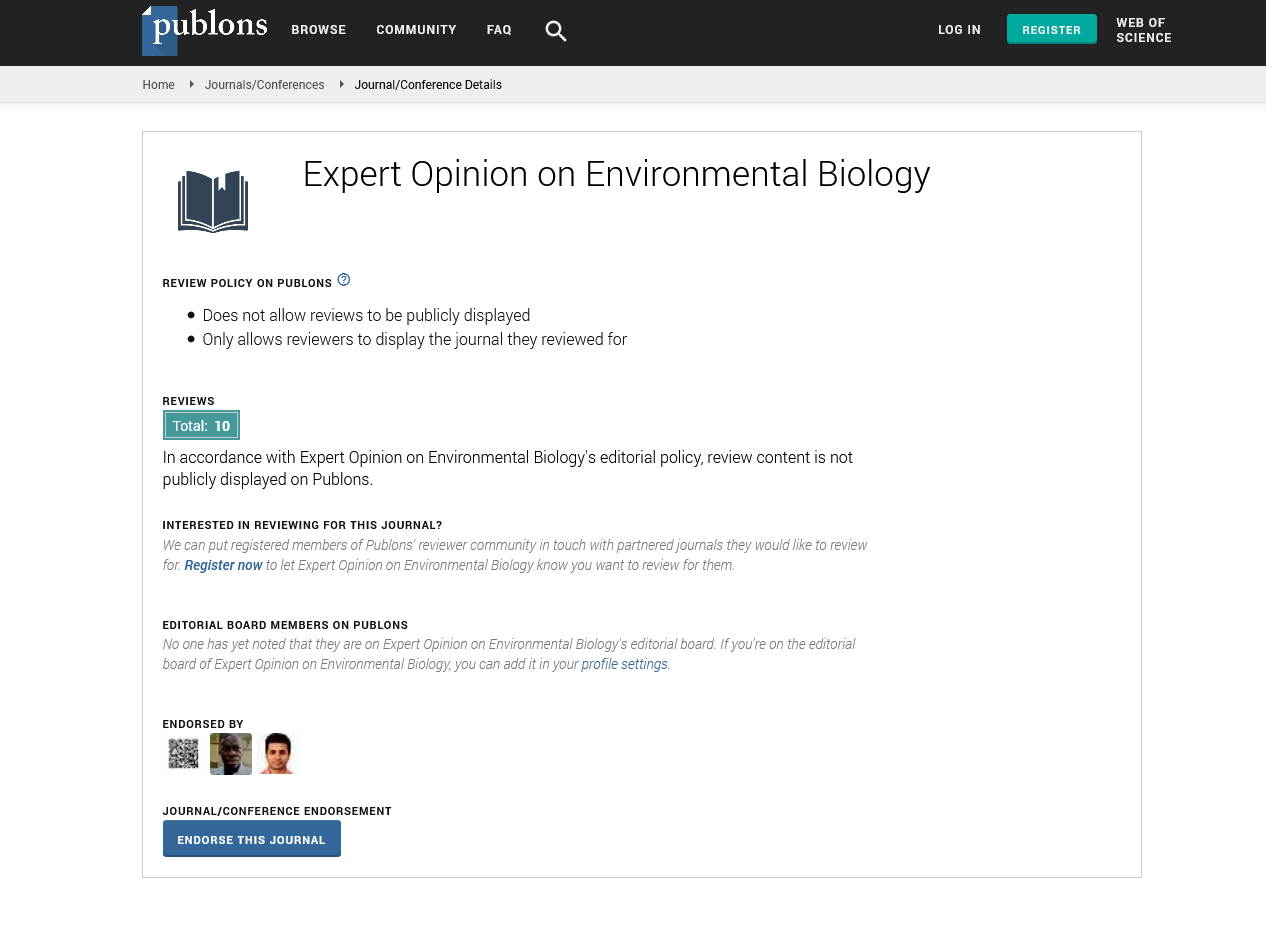Scenedesmus dimorphus NT8c conversion of sugarcane bagasse hydrolysate into biodiesel
Maleeha Manzoor; Skye-Thomas Hall; Peer Schenk and Javed Iqbal Qazi
Microbial Biotechnology Lab, Zoology Department, University of Punjab, Lahore, Pakistan
Government College University, Faisalabad, Pakistan
School of Agriculture and Food Sciences, UQ, Qld, Australia
: Expert Opin Environ Biol
Abstract
Fossils fuels are the main world energy supply. Overuse of fossil fuel to fulfill energy requirement has generated environmental issues like air pollution leading to global warming. Increasing environmental problems and exhaustion of fossil resources has forced the researchers to explore alternative fuel sources. In this scenario biofuels are the promising alternative fuel to meet energy crisis. The aim of present study was to cultivate microalgae on lignocellulosic waste for biodiesel production. In the present study Scenedesmus dimorphus NT8c was cultivated photoautotrophically and mixotrophically on sugarcane bagasse hydrolysate. Green microalga was analyzed by studying its biochemical composition and growth parameters. Scenedesmus dimorphus NT8c cultures fed with sugarcane bagasse were found to have high growth rate, maximum biomass productivity, protein contents and fatty acid contents as compared to the photoautotrophic cultivation. Microalgae grown mixotrophically are capable of photosynthesizing while metabolizing and assimilating organic carbon. Combination of these two metabolic pathways of autotrophic and mixotrophic cultivations can help in significant increase of biomass and lipid productivity upto 14.88 μg/ml/d. Microalgae are considered to be as sustainable and potential feedstock for biofuels. In addition, consumption of agri-industrial food wastes help to resolve issues of their dumping and pollution of natural environments.
 Spanish
Spanish  Chinese
Chinese  Russian
Russian  German
German  French
French  Japanese
Japanese  Portuguese
Portuguese  Hindi
Hindi 
